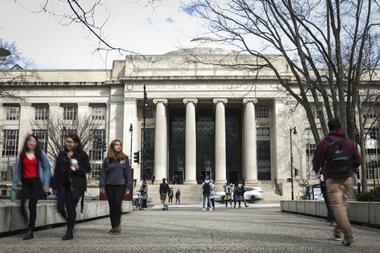
Offering online courses instead of traditional in-person lectures could save universities money and allow them to teach more science, technology, engineering and maths students – without sacrificing learning outcomes. ‘I think this is the strongest evidence to date that students can learn online as well as face-to-face,’ says the study’s leader Igor Chirikov from the University of California, Berkeley, US.
China, India, Russia and the US are the countries that have the most Stem graduates. But all suffer from a lack of qualified instructors, particularly at regional universities. ‘Some countries address this shortage of faculty through establishing online education platforms that offer courses by top universities and students can take them for credit,’ explains Chirikov. But, he adds, there has been little evidence about how effective these online courses are.
Chirikov’s team has found that engineering students taking a semester-long course entirely online had the same final exam results as students learning face-to-face or in a blended format of the two. Resource-constrained universities could save up to 80% per student in instructor compensation and teach up to 18% more students as a result. The savings could then be used to address the teacher shortage, Chirikov says.
The trial was carried out at three Russian regional universities with students randomly assigned to one learning mode. While the trial universities ranked in the bottom half of 458 higher education institutions, the online courses were produced by one of Russia’s top-ranking institutions.
But Clarissa Sorensen-Unruh, a chemistry education researcher from Central New Mexico Community College, says the study offers little in terms of assessing persistence, retention and student satisfaction. Using final exam scores as an effectiveness measure might not get to the bottom of what teaching is about. ‘My fundamental problem with this entire concept is that it dehumanises teaching,’ Sorensen-Unruh says. ‘Their basis of criteria for the best teachers was how many research papers they did. There was no discussion of having been trained or certified or even had thought about online learning and how it’s remarkably different from face-to-face learning.’
Students who learnt online during the study reported slightly lower satisfaction than those taught in person. ‘For more than 90% of the students in our study, it was the first time they studied online,’ Chirikov explains. Many had problems managing their time and would need additional support to become effective online learners.
There’s also a question of whether an online approach might work for chemistry. ‘I’m not against doing online learning for chemistry lectures, but I don’t think there’s any clear way to build the lab skills that you need,’ says Sorensen-Unruh. Chirikov suggests that animated experiments or virtual reality might work in some situations. ‘I think the only way to answer the question of whether this is suitable for chemistry is to try and experiment,’ he says.
The team is now working with US universities to find out how the coronavirus pandemic has affected the thousands of teachers and students that had to adapt to remote methods. ‘After this pandemic is over, I’m pretty sure students will be more open to taking courses online than they were before,’ Chirikov says.
References
I Chirikov et al, Sci. Adv., 2020, 6, eaay5324 (DOI: 10.1126/sciadv.aay5324)

















No comments yet